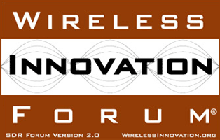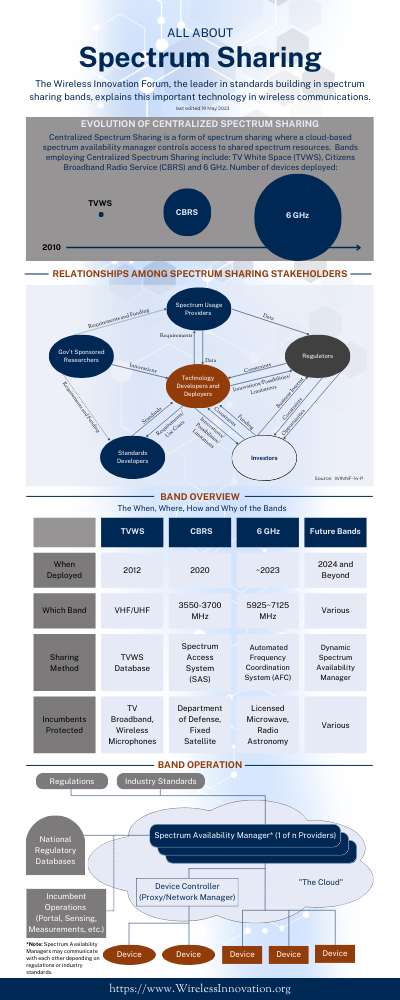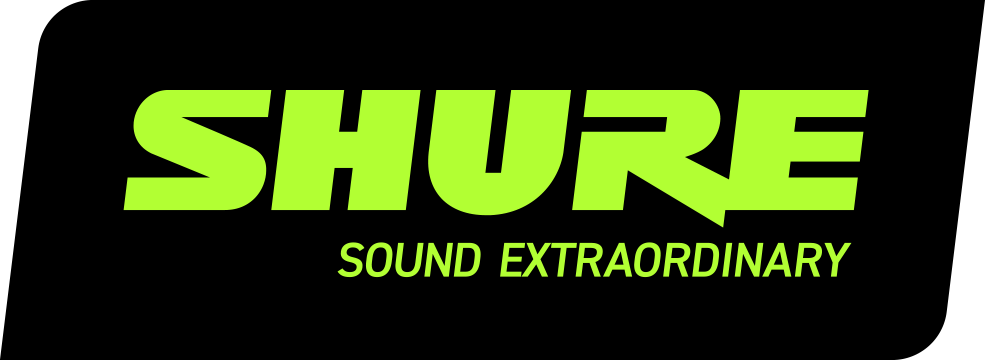- Home
- Knowledge Center
- Reports, Recommendations and Specifications
- Information Documents
- All About Spectrum Sharing Infographic
- Free Webinars
- Tech Talks
- Setting the Standard Video Blog
- Beyond the Radio Dial Video Blog
- Conference Proceedings
- Workshop Proceedings
- Springer Journals
- Market Studies
- What is the SCA?
- Issue Submissions
- Reference Implementations
- What is SDR?
- What are CR and DSA?
- About Us
- Events
- News
- Projects & Committees
- Members
- Join the Forum
Wireless Innovation Committee (formerly Advanced Technologies Committee)The role of the Advanced Technologies Committee is to advocate for the innovative utilization of spectrum, and advancing radio technologies that support essential or critical communications:
Management and oversight of this committee is provided by a Steering Group working in collaboration with a Regulatory Advisory Committee. The Steering Group is comprised of the Forum’s Officers, and is responsible for drafting the Forum’s “Top 10 Most Wanted Wireless Innovations” list and setting the Forum’s “Advocacy Agenda” based on member input. These documents will be distributed to the members of the Forum for ballot following the Forum’s standard process. ProjectsNEW! Highly Dynamic Spectrum Sharing Task GroupThe new project, headed up by Google’s Andrew Clegg, will occur in two stages: analyzing the problem and exploring frameworks to support identified requirements. For more, see our Setting the Standard episode below:
NEW! 6th Generation (6G) Wireless ProjectOn the path-to-6G and the 6G era, the advanced wireless community and 6G ecosystem stakeholders need to develop and implement spectrum sharing strategies and systems to support the growing demand for reliable, sustainable, and ubiquitous high performance wireless connectivity. The community needs effective and efficient critical- and general-communications and technology-flexible spectrum management and control interoperability, disaggregation, and a competitive multivendor environment as well as access to an SDO forum able to effectively host international spectrum sharing information exchange and technical dialogue, which has demonstrated capability to convene and regularly successfully deliver high-quality, high-relevance informal and formal SDO output. The output from this project includes some or all of: technical study, recommendation, report, specification/standard.
Midband Sharing Work GroupThis Working Group was created to address specific issues regarding co-existence between 3 GHz band services. Its initial area of interest is in examining methods to inform and implement TDD synchronization between 3.45 GHz Service and CBRS systems, as implied in the FCC's 3.45 GHz Order. Other topics may also be addressed (for example, similar coordination between 3.7 GHz Service and CBRS; and the impact of adjacent band services on ESC). Access to their first survey is below:
Passive and Active Spectrum Sharing Work GroupThe primary scope of this project will be to extend elements of the CBRS and/or AFC spectrum sharing architectures to compute RA receiver interference from all active emitters in the RA geolocation surroundings, with a target spectrum frequency range from 1 to 15 GHz. Elements will include:
Joint WInnForum-ETSI TC RRS WG on Spectrum Sharing FrameworksThis group's goal is to develop a feasibility study on existing spectrum sharing frameworks for temporary and flexible spectrum access, focused on spectrum for scalable private networks and “on-demand” access. The present study addresses technical approaches for automated spectrum access to support dynamic, temporary, and flexible spectrum sharing. The applications and use cases considered require a certain, typically high Quality of Service (QoS) but are often limited in range and differ in the duration of operation which can vary from short-term (e.g., some days to some weeks) to long-term (e.g., some weeks to some years). Some use cases allow for prior network planning, others require very short-term deployment without a prior planning phase. To support the use cases described, the study shall evaluate:
The group has produced a Study on Spectrum Sharing Frameworks. See the associated joint whitepaper with ETSI here. Unmanned Vehicle Wireless Networking Special Interest GroupCommercial operators of innovative new industries such as autonomous ground transportation systems, drone taxis, drone delivery of packages and medical supplies need access to advanced wireless networking technologies incorporating innovative approaches which can encourage adoption of future industry standards, allowing safe operation in, or under, controlled airspace which can be approved by transportation regulators. Defense agencies and their supporting manufacturers and system integrators to supply advanced networking technologies for UAV, UGV and USV platforms for applications including aerial refueling, reconnaissance swarm, armed escort swarm, autonomous counter-air/counter-drone operations, and swarming reconnaissance/ communications satellite swarms that can safely fly in, under or over controlled airspace of host nations, which can be the subject of future joint/multinational development and procurement efforts. Aircraft, automotive, and maritime manufacturers who will manufacture UAV, UGV, USV and autonomous transportation drones. The group has released two documents: Drone Open-source Ecosystem and Overview of the Use of Drones for Spectrum Monitoring Applications. Regulatory Advisory CommitteeThis group facilitates the exchange of knowledge on technical topics, not to advocate for one policy position or another, helps Forum members better understand emerging regulatory trends across all ITU regions, and helps advisors understand emerging technologies that may impact or be impacted by the regulatory landscape. WInnForum Advocacy AgendaIn 2012, The Wireless Innovation Forum initiated a project to identify the major advocacy positions that the Forum will use to collaborate with governments, regulators, standards bodies, and research sponsors acting as the voice of the wireless innovation community. Learn more about our positions here: https://www.wirelessinnovation.org/advocacy-agenda. To contribute to any of the projects listed above, or if you have an advanced wireless problem that you need solved, join us! Contact John Glossner at [email protected] Committee Links
|




